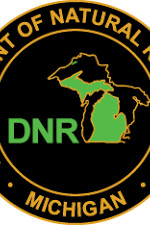
Upper Peninsula Weekly Fishing Report – June 24, 2020
| Keweenaw Bay: Catch rates were hit or miss after the strong winds. Keweenaw Bay area saw mostly lake trout with a small number of Chinook and brown trout caught. In Huron Bay as well as from the Traverse launch, anglers typically found lake trout.
Little Bay De Noc: Fishing slowed with the abundance of food available, such as alewife and the hex hatches. Walleye catches were spotty at best, while the mouth of the Whitefish and Escanaba rivers were still being fished the most. The “Black Bottom,” Third Reef and Breezy Point all produced catches when trolling a crawler harness or stick baits. A few perch were caught near Gladstone Beach with minnows or crawlers in 25 to 30 feet. Bass anglers also reported fewer catches, but the fishing was still good. The two best areas were around Hunters Point and south by the Ford River when casting plastics in 3 to 12 feet. Manistique: Salmon catches were down from the previous week, but it is still early in the season. Anglers marked good numbers of baitfish, and many are reporting lake trout catches. Alewife have been spotted just outside the break wall, which is probably why walleye catches were down. St. Marys River: Walleye anglers reported fair catches at Carlton Creek, which is 2 miles south of the Raber Bay boat launch, when trolling a crawler harness and bottom bouncer just off the weed beds in early morning. Try a purple beaded harness fished 4 feet off the bottom. Round Island, located on the north side of Lime Island, was good for walleye early or late when using a slip bobber with a shiner just off the weed beds in 8 to 12 feet. Detour: Atlantic salmon fishing slowed. The few catches reported were taken between the first red buoy east of Detour Lighthouse, on the Drummond Island side of the river. The fish were 35 to 60 feet down in 90 to 100 feet. Hot colors were orange and gold with a black ladder. Keep your trolling speed between 3.5 and 4 mph. Drummond Island: Anglers reported good catches of walleye at the north end of Scott Bay between Peck Island and Ashman Island with crankbaits in 12 to 14 feet in the early morning. Yellow perch were caught inside of Harbor Island midmorning with worms or shiners. Good smallmouth action at the north and south end of James Island, in between Scott Bay and Maxton bays. Try casting spinners and a dark green or brown and orange tube jig off the rocky points in 4 to 8 feet. Cedarville and Hessel: Northern pike up to 28 inches or more were caught in Snows Channel on the east side of Dollar Island when drift fishing with chubs in 8 feet in the early morning. A few perch were caught at the east end of Musky Bay near Connors Point in 8 to 10 feet with shiners or worms. The mouth of Duck Bay on the west side of Musky Bay reported nice catches of smallmouth bass when casting gold and silver leaf spinners. Island #8 reported some catches of yellow perch in 6 to 8 feet with a worm under a bobber. St. Ignace: Those trolling had no success. The walleye bite on the Pine River slowed due to an early fly hatch. Those drifting leeches and boat anglers trolling or drifting leeches on a crawler harness found a few fish. On the Carp River, walleye and suckers were caught but no pike. Most are bottom bouncing leeches and worms.
|
Fishing Tip: How to catch your own nightcrawlersAre you interested in catching and keeping your own nightcrawlers? It’s fairly easy to do – just follow these simple steps:
Store them properly. When you catch nightcrawlers, just lay them on top of some storage bedding – don’t mix them in. This will allow you to remove sick or dead ones more easily. |

Comments (0)